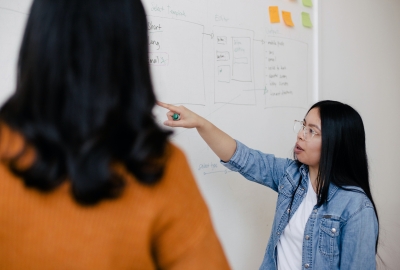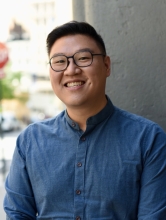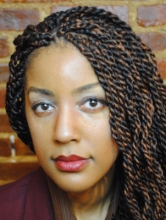
By Pamela D’Andrea Martínez, Hua-Yu Sebastian Cherng, Nyissia Spruill, and Lilly Padía
Learning spaces should not look like sitting in a movie theater–or watching Netflix on a laptop at home. A learning space cannot be a one-way communiqué because if learning is designed by the instructor and then simply provided without student co-construction, it means instructors are centering their assumptions and expectations. This is how teachers can be complicit in longstanding inequities negatively impacting Students of Color, disabled students, multilingual learners, and other vulnerable groups while compounding advantages for students with privileged identities.
In K-12 education this is often called “teaching to the middle,” a critique that leads to differentiated instruction or personalized learning. An equity lens tells us setting any kind of “center” or “middle” in the classroom can never be neutral, fair, or unbiased. However, schools and universities are historically designed with a center in mind: the ideal student and their sociopolitical position in the world. We can predict that a classroom without co-construction will likely teach to its default design: a White, middle class, cisgender, able-bodied “audience.” And, if we’re lucky, everyone else gets accommodations or adjustments to the center. Still, accommodations will never be enough to make education equitable without changing the center.
If the need for classroom co-construction, beyond the teacher’s gaze and beyond accommodations, wasn’t already an emergency before the COVID-19 pandemic, now we’re at an impasse without it. Here we offer a teaching reflection from one of the authors of our blog series, Pamela. We describe her attempts to accommodate student needs while teaching in-person, how she realized her practices were inequitable, and we offer ways that student-teacher relationships can help to co-construct an equitable online learning environment.
From assumptions to inequities
At the start of every semester, Pamela tells her undergraduate students to come to her if they ever have extenuating circumstances and if aspects of the syllabus need to be renegotiated for them. After enough semesters, Pamela realized she couldn’t just state this at the beginning and walk away. To avoid the end-of-semester panic–when many students suddenly seemed to have extenuating circumstances–she needed to restate her openness to renegotiate throughout. For a while, this seemed to work. Students took her up on having more one-on-one conferences and she found she had more opportunities to address students’ individual needs.
One semester, a senior in Pamela’s class stopped turning in work. The student conferenced with Pamela and said everything was okay and that she would get it done. But the problem persisted and they conferenced during office hours again. This time, the student admitted she was not comfortable “negotiating” the syllabus. She felt responsible for taking on the class as outlined by the syllabus, and, although Pamela had set the “come to me” precedent, the student did not feel it was culturally appropriate for her to make her problems the professor’s problems. This was not how she was raised, she said. Pamela realized she had centered an approach to seeking accommodations that would come easiest for her as the instructor. Thus, Pamela had not placed this student at the center of her teaching choices.
The shift to online education as a result of COVID-19 has made the “centers” in Pamela’s teaching even more obvious to her, and highlighted the flaws in how she builds relationships with students. As a result, Pamela continuously works to eliminate the following assumptions and practices which impede her ability to build the relationships with students that are necessary for co-constructing the course:
- When instructors assume that students will come to them with extenuating circumstances, they are centering a particular student, or even their own background. Over years of teaching, it may even become predictable to instructors which students will take them up on offers to make accommodations for them. As Pamela experienced with her student, these assumptions can be culturally insensitive and ableist.
- For many of the reasons that students may need accommodations, coming to the instructor is added labor and time that students cannot always give.
- At some point, building the instructor-student relationship can become less about working with students and more about avoiding conflict at the end of the semester.
Instructor-Student Relationships for Educational Equity Offline and Online
Pamela reports that when COVID-19 happened, some of her students suffered loss of loved ones, loss of housing, and precarious health and security conditions. For others, their biggest adjustment was moving back home with families in spacious homes, who have job security even in trying times. In her reflections, Pamela noticed at least a racial and socioeconomic divide between which of these conditions her students faced. But the effects of COVID-19 are not the beginning of this divide; they are just another expression of inequity. If pre-existing, one-way, and universal sets of expectations and teaching choices were already damaging to students before, now they would guarantee that teaching would be exclusively for the most privileged. Even some assignments now only seem to tell instructors what student’s social markers are, whether or not they or their family members are sick, and their life circumstances.
As such, Pamela needed to co-construct the course with her students before COVID-19, and now, she needed to do so with utmost humility. For instructors to decenter themselves to build a course with their students, classes, whether online, hybrid, blended, in-person, etc., must engage structures and practices that build trust and allow students to freely bring who they are into the space. Through reflecting on Pamela’s in-person work in previous semesters and online work with students this past semester, we share some ways that this can be done through two different understandings of the student-instructor relationship:
Interpersonal relationships
Strengthening the relationship with students should rely less on students self-advocating for accommodations or opting into a relationship with the instructor. Any time there’s an element of choice, only some students will be able to take it up. And, in the case of Pamela’s student scenario, this means that when she called her in for one-on-one conferencing, she also conveyed an expectation to the student that she would need to tell her what was going on, something that Pamela now feels she does not have the right to do. Building relationships and trust means not judging the value of a student's reasons–that is, their “deservingness” to be accomodated. Any practice or policy that hinges on this unhealthy dynamic needs to be eliminated. For example, through COVID-19, Pamela is incorporating ways that the course can always be flexible in terms of deadlines, or even student synchronous attendance, without students having to ask her or give her reasons. This way, relationships with students can have genuine starting points, not “negotiation”, as an entryway.
Interpersonal relationships can be built on an on-going basis and, if class is structured in ways that allow for many interactions, learning about students can happen during class. Pamela now does this with limiting lectures in favor of problem-based and experiential learning activities where the class, including Pamela, works together to practice and apply what they learn. This is essential for community-building among students, too, which is another necessary component to co-constructing a course. Shifting from in-person to online teaching and learning is tricky, but there are synchronous ways (small groups and one-on-ones) and asynchronous ways (forums and chats) to structure interactions and relationship-building with online technology.
The student-teacher dynamic
If the teacher is the only “expert” in the room, they are inevitably the center. A student-instructor dynamic that allows for co-construction requires that instructors and students share their roles. In Pamela’s class, students facilitate discussion with their own questions and share personal testimonios to add their lived experiences as legitimate knowledge in the course. The class co-constructs the syllabus and redesigns it throughout the semester and students demonstrate their knowledge in ways that center their personal and professional goals (e.g., they decide their own final products and have created policy statements, art, campaigns, lessons, research proposals, etc). When the teacher and student roles are disrupted in this way–the center changes–and we can all take ownership of what we are co-teaching and learning.
University Instruction in the Time of COVID-19 (Part 1): Equitable Online Teaching
University Instruction in the Time of COVID-19(Part 2): Reconceptualizing Participation





